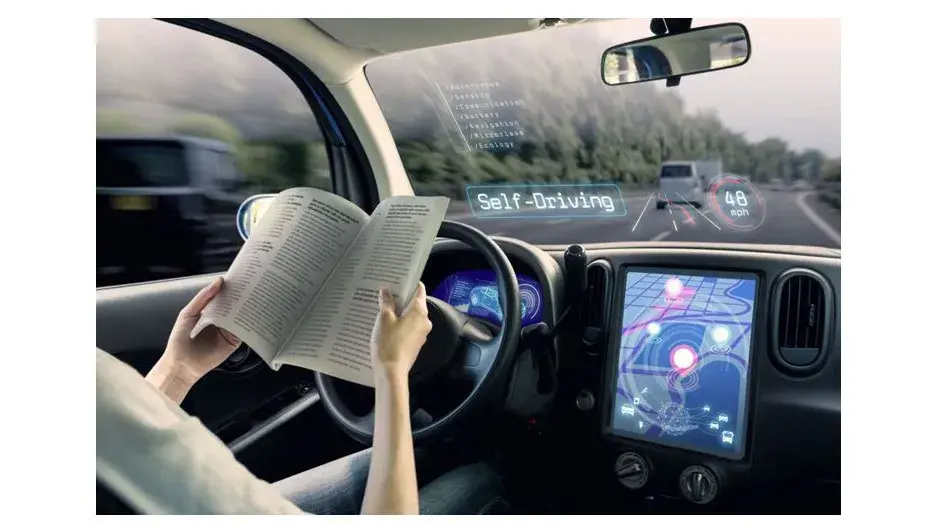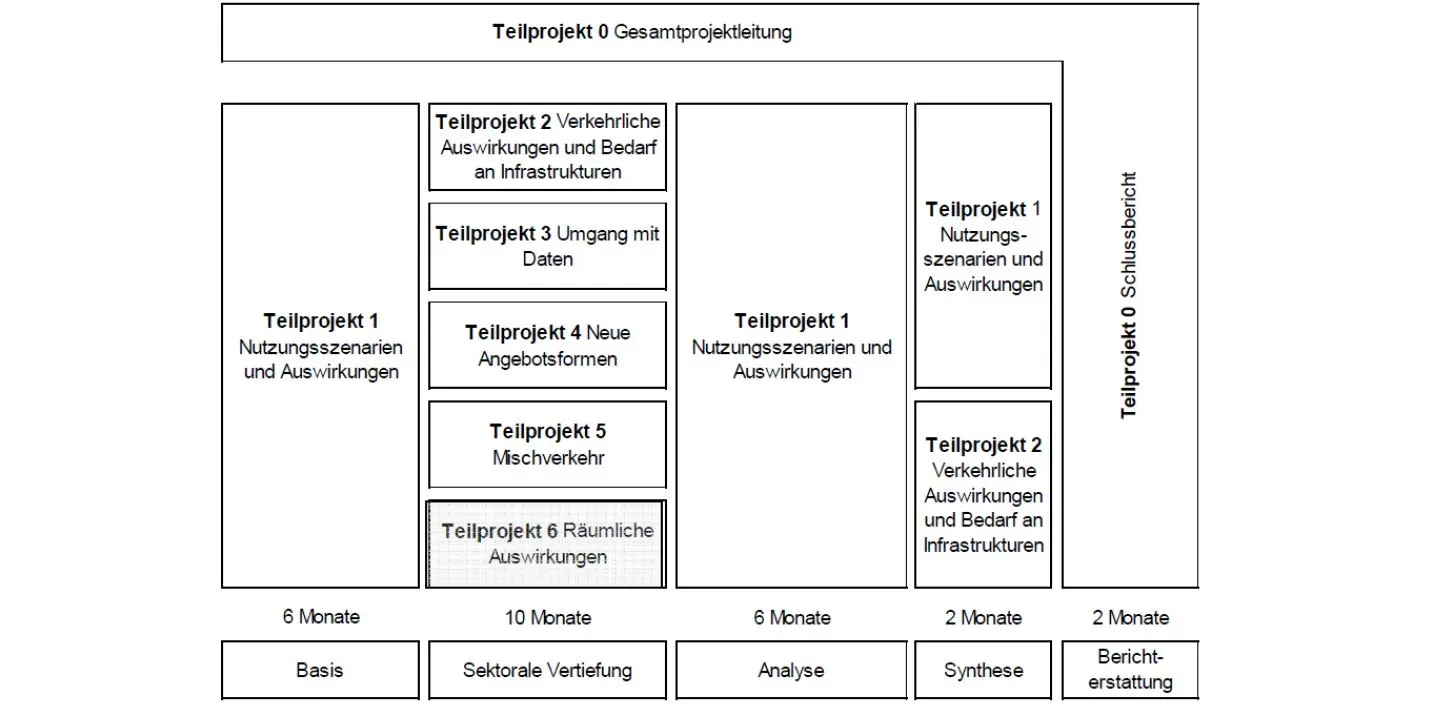Effects of automated driving: Spatial impacts
The research package "Effects of Automated Driving" examines central aspects and effects of automated and networked mobility for Switzerland. In subproject 6, INE investigates possible spatial effects of automated and networked driving and formulates recommendations for action to support Switzerland's spatial planning goals.

Initial situation and objectives
The initial project "Automated driving: Clarification of the need for research and action" (ASTRA 2015/004) took up the questions posed in the report of the Federal Council "Automated driving - consequences and effects on transport policy" of December 2016, deepened them and identified the resulting need for research. Some of these gaps in knowledge, which from a Swiss point of view are essential, are to be closed with the ASTRA-led research package "Effects of Automated Driving".
The aim of the package is to clarify aspects of automated driving that could have a significant influence on the requirements of roads and roadside infrastructure in the short and medium term. Various aspects such as traffic effects, data handling, organisation of mixed traffic, the influence of new mobility offers or the effects of automated driving on the spatial structure will be clarified. In this way, policymakers, authorities and relevant stakeholders are provided with a basis on which to prepare for foreseeable developments in Switzerland and, if necessary, influence them proactively.
Structure of the research package
The research package is structured in such a way that an additional added value is generated through the interaction of various related research projects. The synthesis of the individual research projects results in a differentiated consideration of the opportunities and risks of automated vehicles for society and special groups, as well as options for action for politicians and authorities. The research package comprises a total of six subprojects (SP), which work out research results on individual thematic focal points. SP1 is the basis for the sectoral deepenings, both upstream and downstream. In addition, SP2 is used again with a target scenario to be defined following the sectoral deepenings.

All subprojects are based on the usage scenarios concretized in a joint workshop. They carry out an analysis of the effects of automated driving according to scenarios on their subject area or its environment, evaluate the effects and assess the scenarios from their perspective. For the revision of the scenarios, they propose appropriate adjustments (further differentiations and refinements) and make recommendations for the stakeholders based on their findings.
Subproject 6: Spatial effects
In subproject 6, the INE investigates the effects of automated driving on the spatial development of Switzerland. The aim of this subproject is to develop recommendations for stakeholders and measures to support Switzerland's spatial planning objectives. The work in subproject 6 is divided into 4 work packages (WP's):
- In WP1, general comfort and time-use aspects of automated driving are analysed. The results of this analysis will then be examined within the Swiss context. To this end, the length and duration of the typical working routes of autopendlers in Switzerland will be considered in order to determine the potential of active time use on Swiss roads. In addition, other socio-economic aspects such as commuter occupations and the average household income and budget are taken into account. The aim of this analysis is to provide an initial assessment of which part of the population could benefit from active time use through automation from a professional and economic perspective. The focus is on commuter traffic. Since leisure traffic also plays a major role in Swiss mobility, the new opportunities that could arise from automation in tourism and leisure traffic will also be examined in more detail.
- In WP2, expert interviews will be used to analyse which policy-making approaches at the transport level could be particularly suitable for the Swiss context in order to steer Swiss mobility more towards multimodality within the framework of sustainable spatial development with dense settlement structures. The results of this work package mainly comprise traffic management measures.
- WP3 focuses on the spatial planning level. An expert workshop will be organised here to discuss the challenges of future mobility and spatial development and possible solutions.
- Finally, WP4 will analyse the role of automation in freight transport. The main objective of this analysis is to use expert interviews to assess the extent to which the availability of automated trucks, which could lead to significantly lower costs in road freight transport by eliminating the driver, could influence the location decisions of logistics companies in the future.
At a glance
Participating Institutes ZHAW:
Project partners:
- none
Project Manager ZHAW:
Team:
- Thomas Trachsel, Raphael Hoerler
Project status:
- ongoing